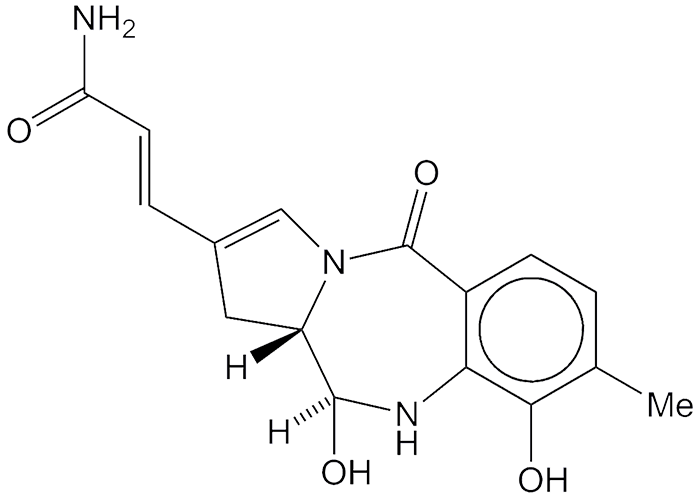

Anthramycin is a cytotoxic antineoplastic drug, more commonly referred to as a chemotherapeutic agent. In 1965, W. Leimgruber and co-workers at Hoffmann-La Roche isolated it from a strain of the bacterium Streptomyces refuineus. It was subsequently found in other Streptomyces spp.
L. H. Hurley and colleagues at the University of Kentucky and Purdue University elucidated the biosynthesis of anthramycin in 1975. They showed that its building blocks are the amino acids L-tryptophan, L-tyrosine, and L-methionine. Anthramycin and its analogues are rarely used for chemotherapy because of their cardiotoxicity.
Anthramycin should not be confused with the much more recently discovered anthracimycin, which W. Fenical and co-workers at the University of California, San Diego, and the Scripps Research Institute extracted from a marine bacterium. They found that anthracimycin is a potent killer of the anthrax bacterium and methicillin-resistant Staphylococcus aureus (MRSA).

Learn more about this molecule from CAS, the most authoritative and comprehensive source for chemical information.
Molecule of the Week needs your suggestions!
If your favorite molecule is not in our archive, please send us a message. The molecule can be notable for its current or historical importance or for any quirky reason. Thank you!
Stay Ahead of the Chemistry Curve
Learn how ACS can help you stay ahead in the world of chemistry.

